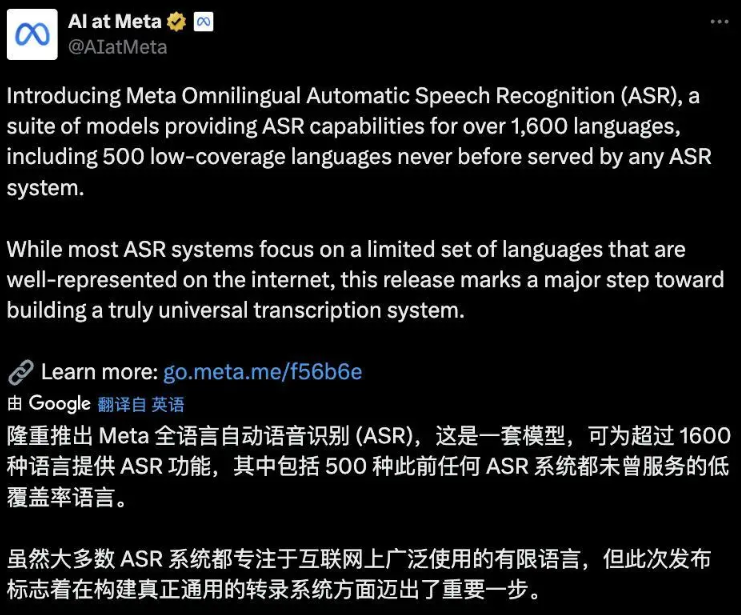Over 95% of the world's 7,000 languages have long been ignored by AI speech technologies—until today. Meta's latest release, the Omnilingual ASR (Automatic Speech Recognition) system, breaks the "elitist monopoly" in language technology, achieving high-precision speech recognition for 1,600 languages for the first time. It also introduces a revolutionary "contextual learning" mechanism, allowing AI to quickly learn a new language with just a few audio samples. This open-source system not only leads technologically but also carries the mission of digital equity, bringing endangered languages and minority language communities to the center stage of the AI era.
78% of languages have an error rate below 10%, no more "voiceless" minority languages
While traditional speech technologies focus on major languages like English, Chinese, and Spanish, the Omnilingual ASR extends its reach to global marginal language communities. Testing shows that in the 1,600 languages it supports, 78% of the languages have a word error rate (WER), and even in languages with extremely scarce data, 36% achieve an error rate below 10%—a performance far exceeding any previous multilingual ASR system, truly enabling "available speech technology" to cover long-neglected groups such as African tribes, South American indigenous peoples, and Southeast Asian ethnic minorities.

Just a few audio clips, teach AI a new language
The core breakthrough of the Omnilingual ASR lies in its contextual few-shot learning capability. Users need only provide a small number of annotated audio-text pairs (e.g., 3–5 sentences), and the system can quickly adapt to new languages through a meta-learning mechanism, without requiring massive data or professional training processes. This design allows the model to theoretically support over 5,400 languages, almost covering all languages with written records, providing a technological foundation for the protection of global linguistic diversity.
Open source + community co-construction, respecting every cultural voice
Meta did not keep the technology confined to the laboratory but fully open-sourced the model and toolchain, and collaborated with dozens of language preservation organizations and local communities worldwide to collect speech data, ensuring the authentic restoration of pronunciation, intonation, and cultural context. In Papua New Guinea, local residents are using the system to record ancestral oral histories; in the Himalayas, monks are beginning to digitize scriptures through voice—AI is no longer an external tool, but a partner in cultural heritage preservation.

A digital revolution for linguistic equality
The significance of the Omnilingual ASR goes beyond technical metrics. It marks a shift of AI from "serving the mainstream" to "empowering the margins," and from "technological centralism" to "cultural inclusiveness." When a child who speaks a language with only thousands of native speakers can communicate with the digital world through speech, technology has truly achieved its inclusive value.
